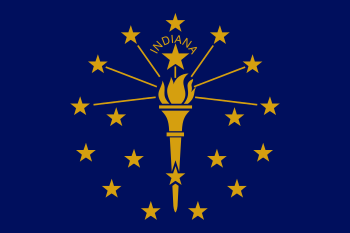Everett Sanders
James Everett Sanders (March 8, 1882 – May 12, 1950) was an American political figure. He was Presidential secretary to President Calvin Coolidge and chairman of the Republican National Committee.
Everett Sanders | |
|---|---|
 | |
| Chair of the Republican National Committee | |
| In office June 17, 1932 – June 5, 1934 | |
| Preceded by | Simeon D. Fess |
| Succeeded by | Henry P. Fletcher |
| Secretary to the President | |
| In office March 4, 1925 – March 4, 1929 | |
| President | Calvin Coolidge |
| Preceded by | C. Bascom Slemp |
| Succeeded by | George E. Akerson |
| Member of the U.S. House of Representatives from Indiana's 5th district | |
| In office March 4, 1917 – March 4, 1925 | |
| Preceded by | Ralph Moss |
| Succeeded by | Noble J. Johnson |
| Personal details | |
| Born | James Everett Sanders March 8, 1882 Coalmont, Indiana, U.S. |
| Died | May 12, 1950 (aged 68) Washington, D.C., U.S. |
| Political party | Republican |
| Spouse(s) | Ella Neal |
| Education | Indiana State University (BA) Indiana University, Bloomington (LLB) |
Biography
Born in Coalmont, Indiana, Sanders attended the Indiana State Normal School, now Indiana State University, and then graduated from Indiana University. He practiced law in Terre Haute, Indiana. From 1917 until 1925 Sanders represented Indiana in the United States Congress. He declined to be re-nominated in 1924, and instead became director of the Speakers' Bureau of the Republican National Committee. Subsequently, in 1925, he accepted the job and replaced C. Bascom Slemp as the personal secretary to President Coolidge early in his second term.[1] During his time as presidential secretary (a position equivalent to the current White House Chief of Staff) Sanders amassed a collection of presidential speeches that became known as the 'Everett Sanders Papers',[2] which contain speeches from June 22, 1925 until February 22, 1929. Sanders also became a member of the Alfalfa Club after 1926.
Sanders was so highly regarded that, after leaving the position in 1929 after Coolidge's second term, President Herbert Hoover appointed him to chair the Republican National Committee, a position he held from 1932 until he stepped down in 1934 after Hoover's disastrous re-election campaign.[3]
Sanders died in Washington, D.C. in 1950, and is buried in Indiana, in the Highland Lawn Cemetery in Terre Haute.
References
- The Everett Sanders Papers retrieved on March 25, 2007.
- "A Sanders for a Slemp.", Time, 1925-01-26, retrieved 2009-05-09
- The Everett Sanders Papers., The Library of Congress, retrieved 2009-05-09
- "Sanders Steps down.", Time, 1934-05-14, retrieved 2009-05-09
External links
- United States Congress. "Everett Sanders (id: S000034)". Biographical Directory of the United States Congress.
| U.S. House of Representatives | ||
|---|---|---|
| Preceded by Ralph Moss |
Member of the U.S. House of Representatives from Indiana's 5th congressional district 1917–1925 |
Succeeded by Noble J. Johnson |
| Political offices | ||
| Preceded by C. Bascom Slemp |
Secretary to the President 1925–1929 |
Succeeded by George E. Akerson |
| Party political offices | ||
| Preceded by Simeon D. Fess |
Chair of the Republican National Committee 1932–1934 |
Succeeded by Henry P. Fletcher |

